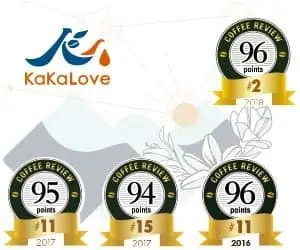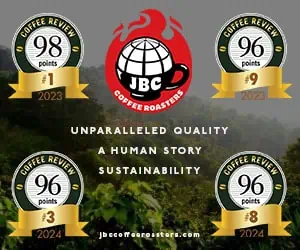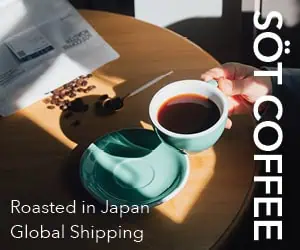Sumatra probably became America’s favorite Indonesia coffee because in the early days of specialty coffee it seemed the most distinctive origin from the region: heavier and richer than Java, twistier and more complex than Papua New Guinea, a bit more consistent and accessible than similar coffees from Sulawesi. And back then, East Timor, the source of two of the Indonesia coffees in this month’s cupping, wasn’t even exporting coffee.
However, becoming America’s favorite Indonesia may not have been an entirely positive development for Sumatra. Intense competition for a coffee that was never particularly consistent to start with has meant a lot of second-rate Sumatras have made their way onto the American market in recent years: hard, inert versions, rather than the rich, deep ones that made Sumatra’s reputation. For this reason, it seemed a good time to do a cupping of Sumatras matched against related origins from elsewhere in Indonesia and from Papua New Guinea. This month’s coffees include five Sumatras, two Javas, one Sulawesi, two Timors, and two Papua New Guineas. It is, in other words, a broad and interesting range of coffees from across the region, but also a very thin selection in regard to any single, specific origin. Clearly, it would not be fair to form any definitive conclusions about these complex origins based the one or two samples in this cupping.
Coffee processing, or how the fruit is removed from the beans and how the beans are dried, is a particularly important issue when describing differences among Indonesian and Papua New Guinea coffees. There appear to be two broad approaches prevailing in the region. One is the classic wet or washed method, in which the fruit is stripped from the beans in complex steps using relatively large-scale machinery. Coffee from the large estates of Java and Papua New Guinea are processed using this method. Apparently the organically grown coffees now appearing from Timor also are processed using some sort of formal, mechanized washed method.
At the other extreme are the traditional, small-holder coffees of Sumatra and Sulawesi. These are processed by the peasant growers themselves using extremely simple methods. The skins of the coffee fruit are first removed using small, modest, often hand-cranked machines. The sticky beans are then dried with the flesh of the fruit still attached (semi-dry process) or the coffee flesh is loosened by informal overnight fermentation in plastic bags before being washed off by hand in creek or well water (a sort of backyard washed process). In both cases, the extended contact of the flesh of the coffee fruit with the bean produces a heavier, less bright profile than the formal, large-scale processes prevailing on the estates of Papua New Guinea and Java, where the fruit residue is removed decisively using large volumes of water.
A similar difference prevails in regard to drying the coffee. With the estate coffees of Java and Papua New Guinea the drying procedure is considerably more formal and controlled than the drying of small-holder Sumatras and Sulawesis. The traditional drying procedure in the Mandheling region of Sumatra, for example, tends to happen in irregular stages, starting in the farmer’s front yard and concluding in exporter patios.
What these differences in technique mean for taste is that estate Javas and Papua New Guineas are brighter, lighter-toned, and usually more consistent than traditionally processed, small-holder coffees from Sumatra and Sulawesi. At their best these small-holder coffees can be unique and distinctive: round, rich, pungent yet fragrantly sweet. If something goes wrong, however, as it often does, they can be musty and hard-tasting (from incomplete or interrupted drying), earthy (from literally having been dried on earth), or even mushroomy or mouldy.
This month’s small sampling supports these generalizations. The traditionally processed Sumatras and the one Sulawesi are lower-toned and pungent-sweet, while the estate, wet-processed coffees are cleaner, more delicate, and higher-toned.
What surprised me, however, was the absence of a really knockout example of a traditional Sumatra this time around, and the almost correspondingly high quality of the two estate Javas. Most of the Sumatras and the one traditional Sulawesi were marred by varying degrees of hardness in the profile, probably owing to drying faults. On the other hand, the two estate Javas were among the best, cleanest, and most complex I’ve tasted from that origin in some time. And the two Papua New Guinea Sigris were understated but fragrantly distinctive.
A last word on taste and processing in Indonesia: Two aged Sumatras turned up in the cupping. Aging coffees is a wonderfully romantic tradition that apparently originated with coffees that transformed in taste as they were carried from Java to Europe inside the humid hulls of sailing vessels in the 19th century. Today Indonesian coffees are either aged deliberately and systematically or casually and often inadvertently.
Deliberate aging usually takes place in the warehouses of exporters. Coffees are held in bags, periodically removed from the bags, mixed and raked, and rebagged. I’ve been told that a good Indonesian aged coffee is held and handled this way for four to five years.
With the two aged Sumatras in this month’s cupping I would bet that the aging was either rushed or mishandled in some way by the exporter. The syrupy, almost dull heaviness of the aged coffees I remember is hardly evident at all in the Armeno presentation. Instead we get an overpowering (perhaps musty) hardness. In the Allegro rendition the heavy sweetness is agreeably present but marred by a muted version of the same hardness that virtually ruins the Armeno. The difference between the two coffees may be treatment in the roast: The Allegro’s seemingly more deliberate roast style probably better developed the potential sweetness and complexity in the aged profile.I suspect that these coffees were probably the best aged Indonesias available at this moment in coffee history. As Alan Odom of Holland Coffee recently pointed out to me, the run-up in coffee prices a couple of years ago doubtless flushed out every aged, old, stored, and forgotten-about coffee out of every warehouse in the world and put them all out on the market, forcing would-be coffee-aging exporters to start aging coffee all over again. Since green coffee prices have fallen precipitously since then, we probably will see more coffees moved back to corners of warehouses for aging.
I’d suggest that coffee lovers interested in the exotic practice of aging try this month’s Allegro, but avoid jumping to conclusions. Wait a year or two, and try again. Aging coffees is a procedure that rewards patience in consumers as well as producers.










